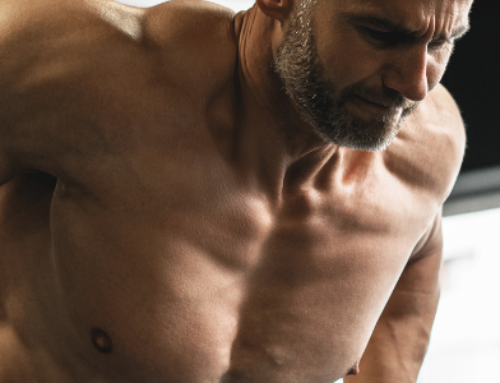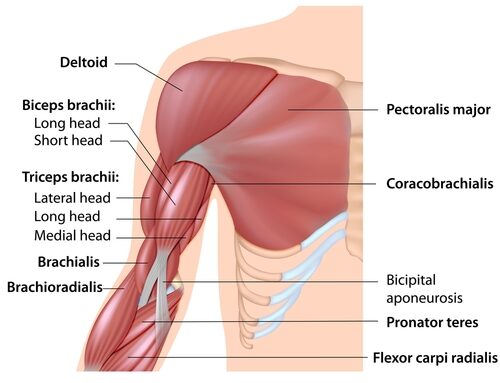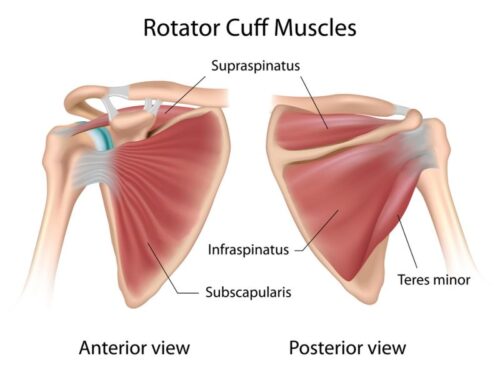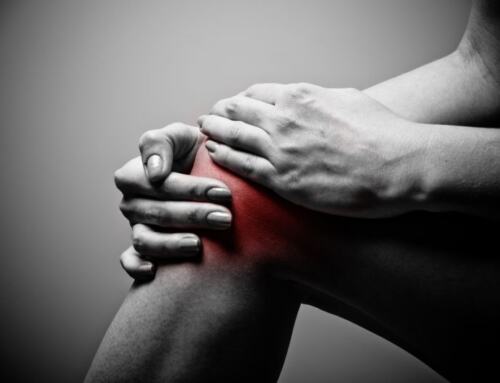The teres major muscle, nestled in your upper arm, is one of the seven scapulohumeral muscles dedicated to moving and stabilizing the shoulder joint. Despite its robust thickness, this muscle maintains a somewhat flat profile and receives its signals from the lower subscapular nerve. It’s like a hidden hero in the upper back, working tirelessly to support your shoulder’s every move.
Information About The Teres Major Muscle
Muscle injuries, including those to the teres major, can arise from various incidents. Excessive pressure might lead to tears, bringing on teres major pain and hampering activities that require moving your arm sideways or backward. While isolated injuries to the teres major are rare, they’re not unheard of in sports like baseball or cricket, particularly among pitchers and bowlers.
Strains, often due to inadequate warm-up before exercise, are a more common woe. These are less severe than tears and typically heal with some rest and patience. As a tip, especially for professional bodybuilders and athletes, a thorough warm-up is your best defense against such strains.
The teres major muscle is also prone to developing myofascial pain syndrome, a condition that might stem from stretch or impact injuries during sports, car accidents, or even a fall onto the shoulder blade. Myofascial pain in the teres major can also evolve from repeated microtrauma, such as reaching up and behind for something overhead or in the backseat, as well as from the rigors of repetitive sports movements.
Teres Major Syndrome is a specific type of myofascial pain affecting this muscle. It can result from various incidents, including those stretch or impact injuries from sports, or even everyday accidents. Those suffering from this syndrome often exhibit trigger points near the shoulder blade and referred pain in nearby areas. A common sign is the ‘jump sign’—a sudden flinch when the affected muscle is stimulated. Understanding these signs and symptoms is crucial for a proper treatment plan, which may include self-massage, trigger point therapy, and targeted stretches to alleviate discomfort and enhance recovery.
Origin The teres major muscle originates from the posterior surface near the lower angle of the scapula, a key part of your upper back.
Insertion It attaches to the medial lip of the intertubercular groove on the humerus, playing a pivotal role in connecting the upper arm to the shoulder blade.
Function This muscle is crucial for the internal rotation, adduction, and extension of the humerus, aiding in movements that bring your arm down and back.
Nerve Supply Its movements are orchestrated by the lower subscapular nerve (C4-C7), a vital component of the shoulder’s nerve network.
Blood Supply The muscle receives blood through three main arteries: the thoracodorsal artery, the posterior circumflex humeral artery, and the circumflex scapular artery, ensuring it has the energy to sustain its function.
Trigger Points in the Teres Major
Although teres major trigger points are rare, they can cause intense shoulder pain in the back of your body!
Trigger points in the teres major refer pain deep into the deltoid area of the shoulder (mostly posterior) and also down the triceps. The TM assists in medial rotation, adduction, and extension of the arm.
If your power steering went out in your car and all of a sudden your shoulder hurts, it’s probably the teres major. Chopping wood and overhand serving a volleyball can also be causes for pain here.
If you think your teres major might have trigger points, have a friend look at your scapula while you reach forward with your arm. If your scapula wings out when your arm is forward and not while it’s down by your body, you likely have trigger points in this muscle. [Other reasons you could have shoulder pain]

Function of the Teres Major
The teres major plays a key role in turning the upper arm inward and toward the middle by drawing the front of the humerus bone closer to the body. It’s also crucial in straightening the arm from a bent position. Often called the “climber’s muscle,” the teres major works together with the chest muscles (pectoralis major) and the muscles of the back (latissimus dorsi) to pull the torso upwards during climbing motions when the arm is fixed. Additionally, it provides support and stability to the latissimus dorsi during actions like chopping wood. The actions of the teres major are essential in various arm-swinging activities.
Self-Massage for Teres Major Muscle Pain
I wouldn’t suggest using your fingers to massage the teres major by pinching and rolling it. This method can be quite exhausting and might eventually lead to soreness in your own hands. A little may be fine, but it’s easy to overdo. Instead, I recommend opting for a massage ball.
Position the side of your body where the teres major is affected against a wall. Place the massage ball between the wall and your body, roughly at the level of your armpit, ensuring it doesn’t drift too close to your rib cage. Lean into the ball to apply pressure and start massaging with slow, deep movements.
Focus on the sore spots — you can use a muscle diagram to help guide you. When you find a particularly tender point, pause there and give it a few precise, concentrated strokes for ultimate pain relief. Remember, the key is gentle, focused pressure rather than overdoing it.
Best Strengthening Exercises for the Teres Major
Dumbbell Pullover
Position yourself so your upper back and neck are resting on the bench, leaving the rest of your body off it. Grip a dumbbell with both hands, either by forming a triangle with your hands around the handle or by holding the inner plate. Position the dumbbell right above your chest, keeping your elbows slightly bent. Engage your core muscles and gently lower the dumbbell past your face and overhead as far as comfortably possible. Then, lift the dumbbell back over your face to the initial position. Complete the desired number of repetitions, focusing on the stretch and contraction of the upper back and teres major muscle with each movement.
Cable Straight Arm Pulldown
Secure a wide grip handle or suitable accessory to the cable machine at an overhead position. Grasp the handle with an overhand grip, hands spaced at shoulder width. Lean forward a bit at the hips and with a slight bend in your elbows, engage your shoulder blades and extend your s
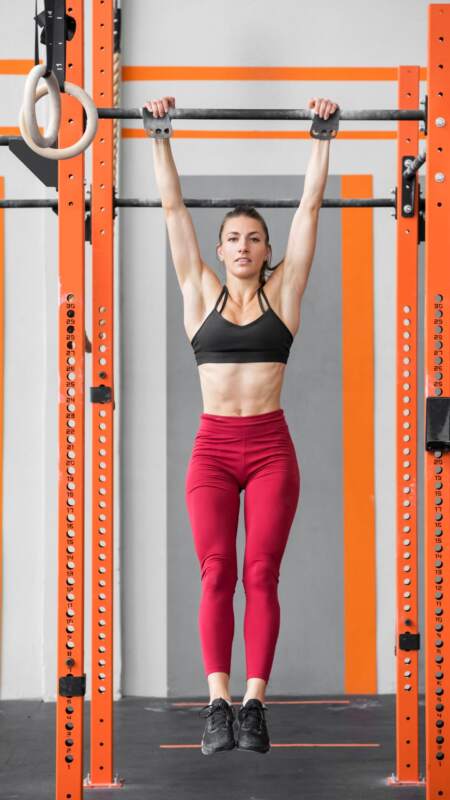
houlders to pull the handle down. Continue until the handle approaches your thighs. Gradually return to the starting point, feeling the engagement in your teres major and latissimus dorsi. Perform the desired number of repetitions, focusing on controlled movement and the stabilizing role of the shoulder and upper back muscles.
Best Stretches for the Teres Major
Dead Hang
Using an overhand grip, grab a pullup bar and hand for 20 seconds. This will stretch the teres and the entire shoulder region.
Standing Elbow Wall Stretch
Raise your left arm over your head then bend at the elbow so your hand is behind your upper back. Press your left elbow into the wall. Tilt your face in towards your armpit. Hold for 30 seconds then switch sides.
Doing these stretches and strengthening exercises are not only good for physical therapy rehabilitation they will also help prevent more serious concerns like frozen shoulder, nerve impingement, or thoracic outlet syndrome.
Addressing shoulder pain or discomfort in any muscle typically involves a combination of rest, stretching, and careful sleeping positions to avoid further strain. However, for a more comprehensive and soothing solution, consider scheduling a therapeutic massage at Body Ache Escape. A professional massage can significantly alleviate pain, enhance mobility, and provide the deep relaxation your muscles crave. Don’t let pain hold you back. Reach out to Body Ache Escape today and take the first step toward a more comfortable and pain-free life.




